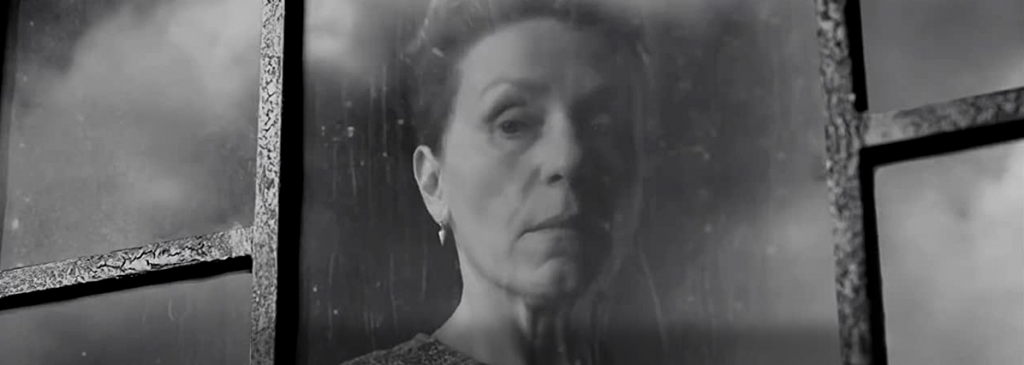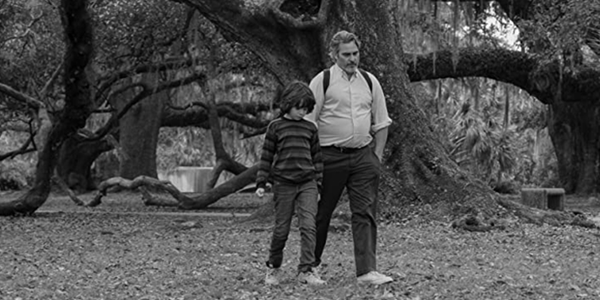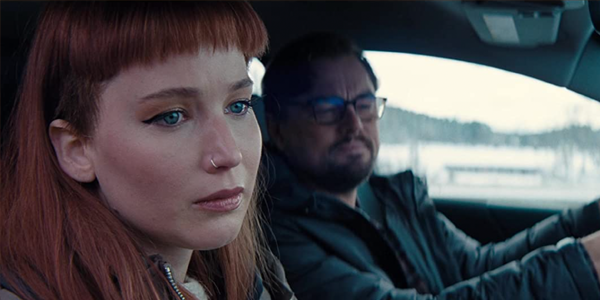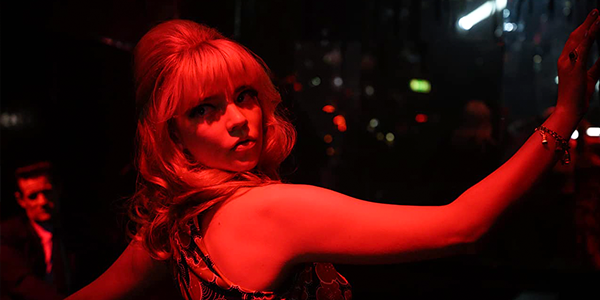
review | The Tragedy of Macbeth
A provocatively modern take on Shakespeare’s classic, despite being shot on a soundstage in black & white with a square aspect ratio
by Roger Kanno
January 19, 2022
The Tragedy of Macbeth is Joel Coen’s first directorial effort done without the partnership of his younger brother, Ethan, with whom he has collaborated on nearly 20 films over almost four decades including such critically acclaimed titles as Fargo, No Country for Old Men, and True Grit. The elder Coen’s Macbeth premiered at the New York Film Festival on September 24, 2021, followed by a limited theatrical release on December 25, 2021 and streaming on Apple TV+ as of January 14, 2022.
A streamlined retelling of the Shakespearean tragedy, this film clocks in at only 105 minutes and is presented in black & white with a 1.37 aspect ratio, giving it a unique style. Shot entirely on a soundstage, the sets are sparse and often highly stylized, providing a stark and dreamlike look that becomes as much a part of the narrative as Shakespeare’s verse. The angularity of long hallways juxtaposed with the many arches in Macbeth’s castle and the movement of the players from light to darkness within the castle mirrors the duality in the characters and their actions. All of this is wonderfully captured in Bruno Delbonnel’s exacting cinematography and the direction of Coen with the tight framing required by the standard aspect ratio forcing the viewer to focus on the actors and their dialog.
The casting of Denzel Washington and Frances McDormand as Macbeth and Lady Macbeth might distract purists but their performances, if not conventional, convey the horribly fearful and tortured nature of their characters brilliantly, especially that of Lady Macbeth. The bird-like imagery created by the intensely contorted movements and piercing vocalizations of Kathryn Hunter as the three witches is genius and the recurring motif of birds is revisited repeatedly during the film. This makes for great spectacle, but not without substance as is of course provided by the source material, but also by the committed performances and the film’s artistic vision.
The film was shot in Arriraw (4.5K) color and converted to black & white in post-production, allowing greater control over grayscale, and it looks fantastic in the 4K Dolby Vision presentation on Apple TV+. There is no evidence of black crush, and extremely challenging material such as fades from foggy or cloudy, irregular backgrounds, and the dim flickering light from candles exhibits almost no aliasing. The searing imagery as Banquo moves out of the shadows into a bright light underscores the importance of his musings on the foresight of the prophecies of the three witches. The contrast between the totally black background and the stark foreground lighting place him in sharp relief and highlights the minutiae in the detail of his facial features and the textures of his clothing with exquisite intricacy.
Stephen Root, whom you may know from the delightfully twisted black comedy Barry, has a brief but comedic scene importantly introducing the literary device of knocking sounds to portend evil. Those knocking sounds and the dripping of water echoed ominously throughout the castle and robustly in my listening room in Dolby Atmos as Lady Macbeth commands, “Out, damned spot; out, I say.” And later, as Macduff’s army approaches, the tolling of bells and the sounds of Macbeth’s panic-stricken subjects fill all of the channels with a satisfying ambience. While surround envelopment and the use of Carter Burwell’s beautifully fitting music score increase as the plot progresses and the drama heightens, I just wish that there had been a bit more generous use of the entire audio palette throughout the film.
I often find film adaptations of plays and musicals to be rather tedious, especially if they are literal adaptions of the source material as I feel that film requires unique visual elements to engage the viewer. However, The Tragedy of Macbeth succeeds in bringing the play to life with a wonderfully surreal vision of medieval Scotland and the treacherous tale of its protagonist.
Roger Kanno began his life-long interest in home cinema almost three decades ago with a collection of LaserDiscs and a Dolby Surround Pro Logic system. Since then, he has seen a lot of movies in his home theater but has an equal fascination with high-end stereo music systems. Roger writes for both Sound & Vision and the SoundStage! Network.
PICTURE | The 4K Dolby Vision presentation on Apple TV+ looks fantastic, with no evidence of black crush. Extremely challenging material such as fades from foggy or cloudy, irregular backgrounds and the dim flickering light from candles exhibits almost no aliasing
SOUND | The Atmos mix allows knocking sounds and the dripping of water to echo ominously throughout the castle, while the tolling of bells and the sounds of Macbeth’s panic-stricken subjects as Macduff’s army approaches fill all the channels with a satisfying ambience
© 2025 Cineluxe LLC





